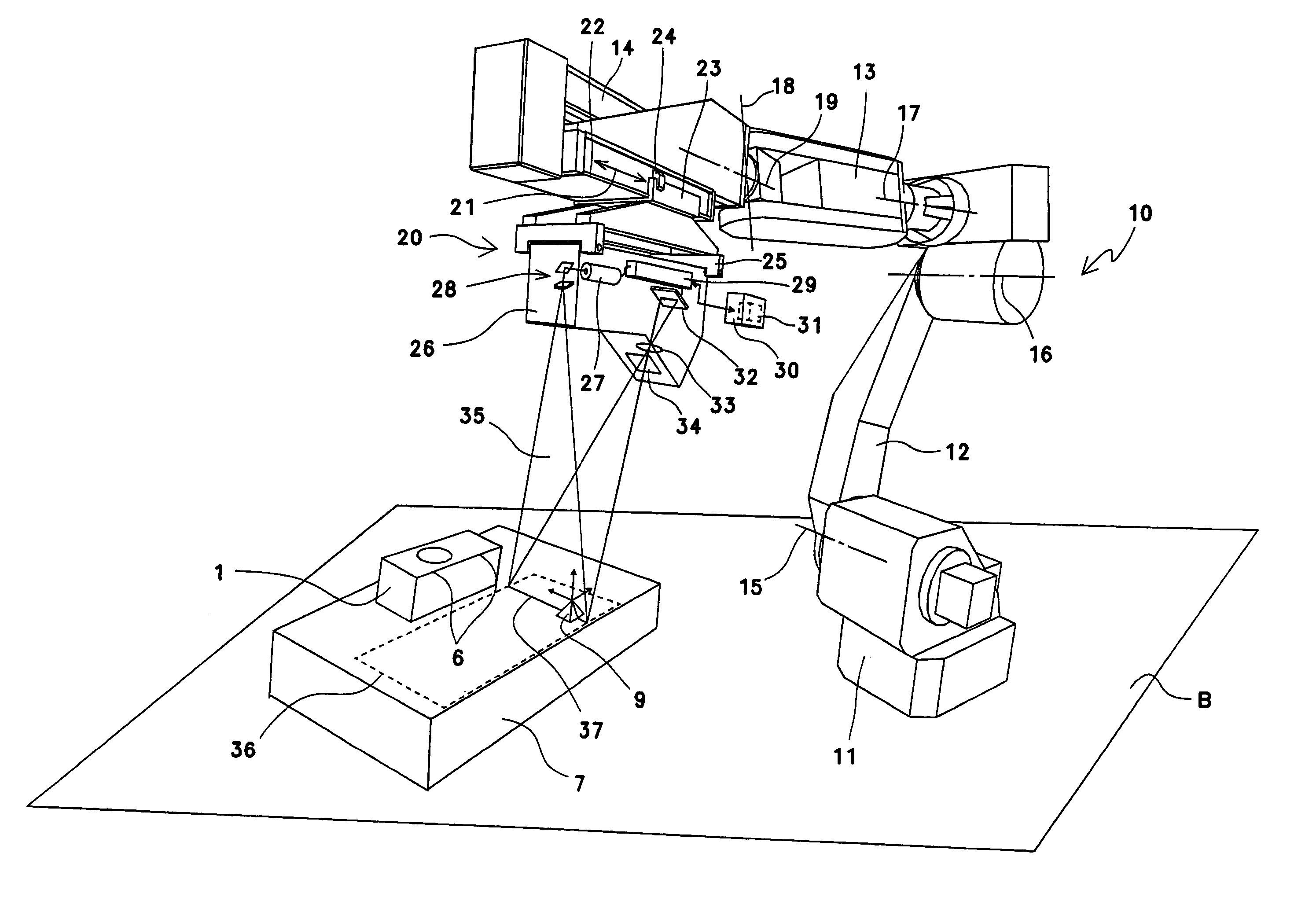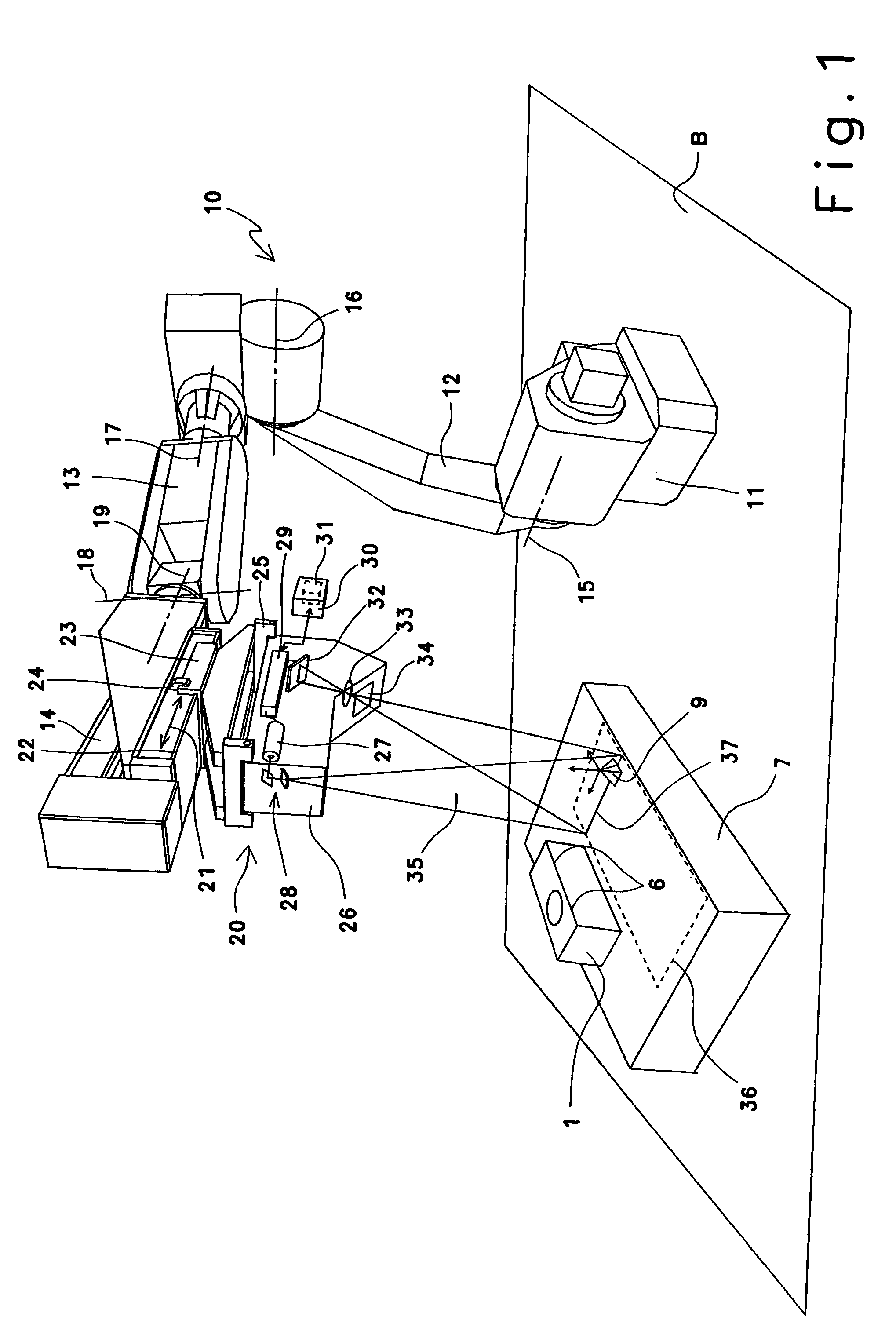Device and method for measuring components
a technology for measuring components and manipulators, applied in the direction of measuring devices, manipulators, instruments, etc., can solve the problem of low absolute deviation in the positioning of the measurement system carried out with the manipulator, and achieve the effect of small error and simple design
- Summary
- Abstract
- Description
- Claims
- Application Information
AI Technical Summary
Benefits of technology
Problems solved by technology
Method used
Image
Examples
Embodiment Construction
[0027]A manipulator 10 designed as an assembly and production robot 10, referred to below as a working robot 10, is shown in FIG. 1. Working robot 10 is anchored on the bottom side in base B via a pedestal 11 such that it is fixed in position. Working robot 10 includes a plurality of segments 12 through 14 in a manner known per se, which, in totality, form the tool carrier. Individual segments 12 through 14 are movable around a large number of horizontal and vertical swivel axes 15 through 19.
[0028]In the exemplary embodiment shown, outer segment 14 of working robot 10 accommodates a retaining device configured in the manner of a linear guide system with a guide rail 22 and a guide carriage 23. Guide rail 22 is secured to outer segment 14 of working robot 10. An adapter piece 25 that holds measurement system 20 is secured to guide carriage 23. When working robot 10 is fixed in place, measurement system 20 is therefore capable of being moved along a linear measurement system axis 21....
PUM
 Login to View More
Login to View More Abstract
Description
Claims
Application Information
 Login to View More
Login to View More - R&D
- Intellectual Property
- Life Sciences
- Materials
- Tech Scout
- Unparalleled Data Quality
- Higher Quality Content
- 60% Fewer Hallucinations
Browse by: Latest US Patents, China's latest patents, Technical Efficacy Thesaurus, Application Domain, Technology Topic, Popular Technical Reports.
© 2025 PatSnap. All rights reserved.Legal|Privacy policy|Modern Slavery Act Transparency Statement|Sitemap|About US| Contact US: help@patsnap.com



